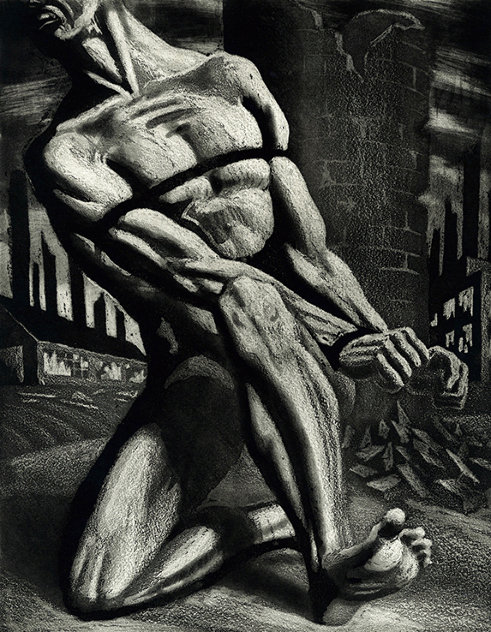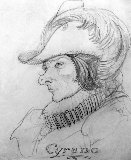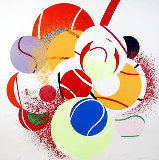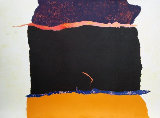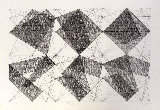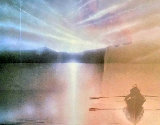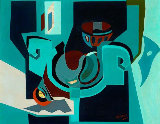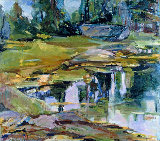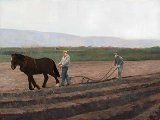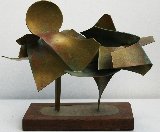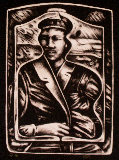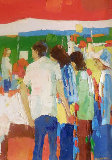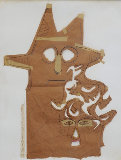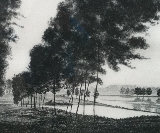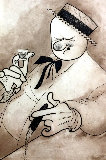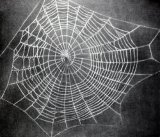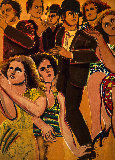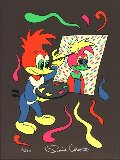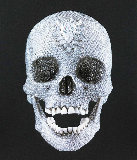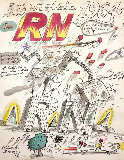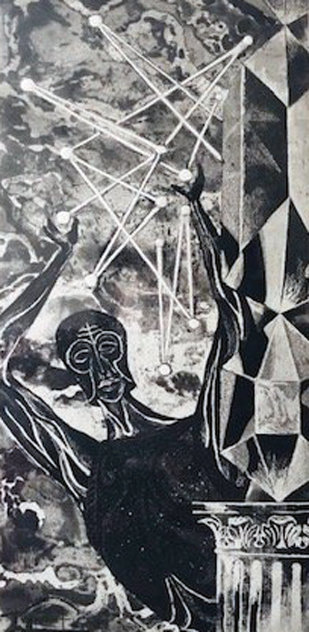




Atom
Harry Sternberg
Limited Edition Print : Engraving on Paper
Size : 15.5x7.5 in | 39x19 cm
Framed : 22.5x13.75 in | 57x35 cm
Edition : Not numbered
Motivated Seller Reduced
- Limited Edition Engraving $1,400
Hand SignedLower Right Pencil
Condition Excellent
Framed with GlassMatted And Framed
Purchased fromPublisher 2001
Provenance / History
Certificate of AuthenticityThe Estate of Margaret Costanzo Davies
LID121744
Harry Sternberg - United States
Art Brokerage: Harry Sternberg American Artist: b. 1904-2001. Harry Sternberg was an American painter, printmaker and educator. He was born in New York City on July 19, 1904 and died in Escondido, California on November 27, 2001. From 1922 until 1926 he trained at the Art Students League of New York. He rented his first studio in Greenwich Village in 1926 and began his career in etching, printmaking and painting. In 1931 his work was exhibited at The Whitney Museum of American Art for the first time. He was appointed in 1933 to the staff of the Art Students League of New York where he would remain an instructor for the next 35 years. The American painter Itshak Holtz was a student of Sternberg. After meeting Diego Rivera, the prominent Mexican muralist, and his wife Frida Kahlo in 1934 he became more politically active in union and socialist causes. In 1935 he was appointed a technical advisor to the Graphic Art Division, Federal Art Project (FAP). He was awarded a Guggenheim Fellowship in 1936 and spent the year studying the conditions of workers in coal mines and steel mills. His drawings, etchings and paintings depicting life in industrial America influenced his post office mural designs especially in Lakeview, Chicago, IL. In 1937 he painted his first post office mural: Carrying the Mail for Sellersville, Pennsylvania. This artwork was commissioned by the former United States Department of the Treasury Section of Painting and Sculpture, later known as the Section of Fine Arts. Later that year Sternberg traveled to Chicago. There he studied the city's history, architecture, industry, and workers. He returned to his New York studio and painted Chicago: Epoch of a Great City, for the Lakeview post office in Chicago. The mural is a powerful depiction of the history of the city from its first settlement of Fort Dearborn to the Great Fire to the life in the stock yards and steel mills and onward into the future. Life for the workers in Chicago's stockyards and steel mills was graphically described in 1906 by Upton Sinclair in his novel The Jungle and the Lakeview mural captures much of this history. He had previously written and published two books: a book on composition called Composition: The Anatomy of Picture Making, and a book on woodblock cutting and printing called WOODCUT.

